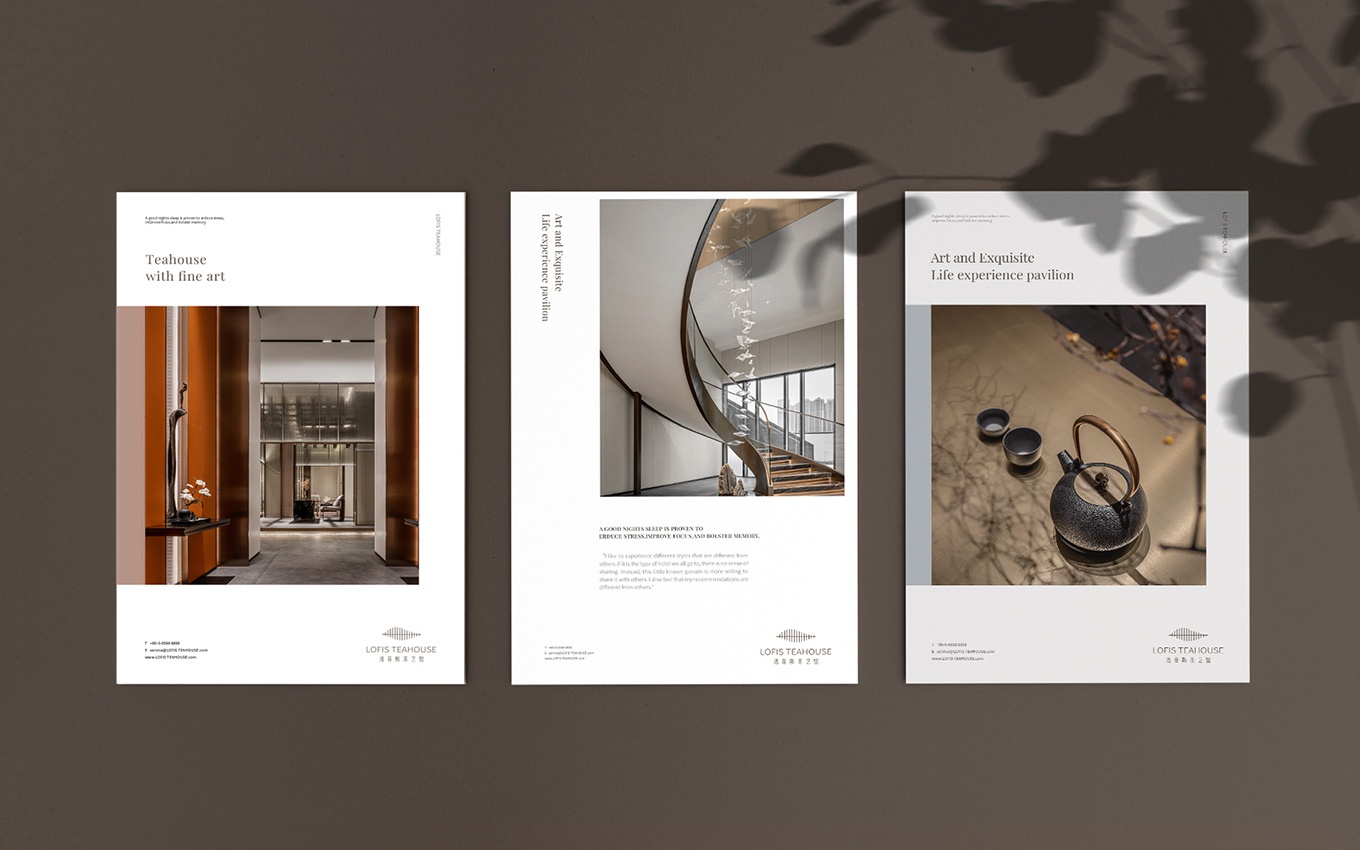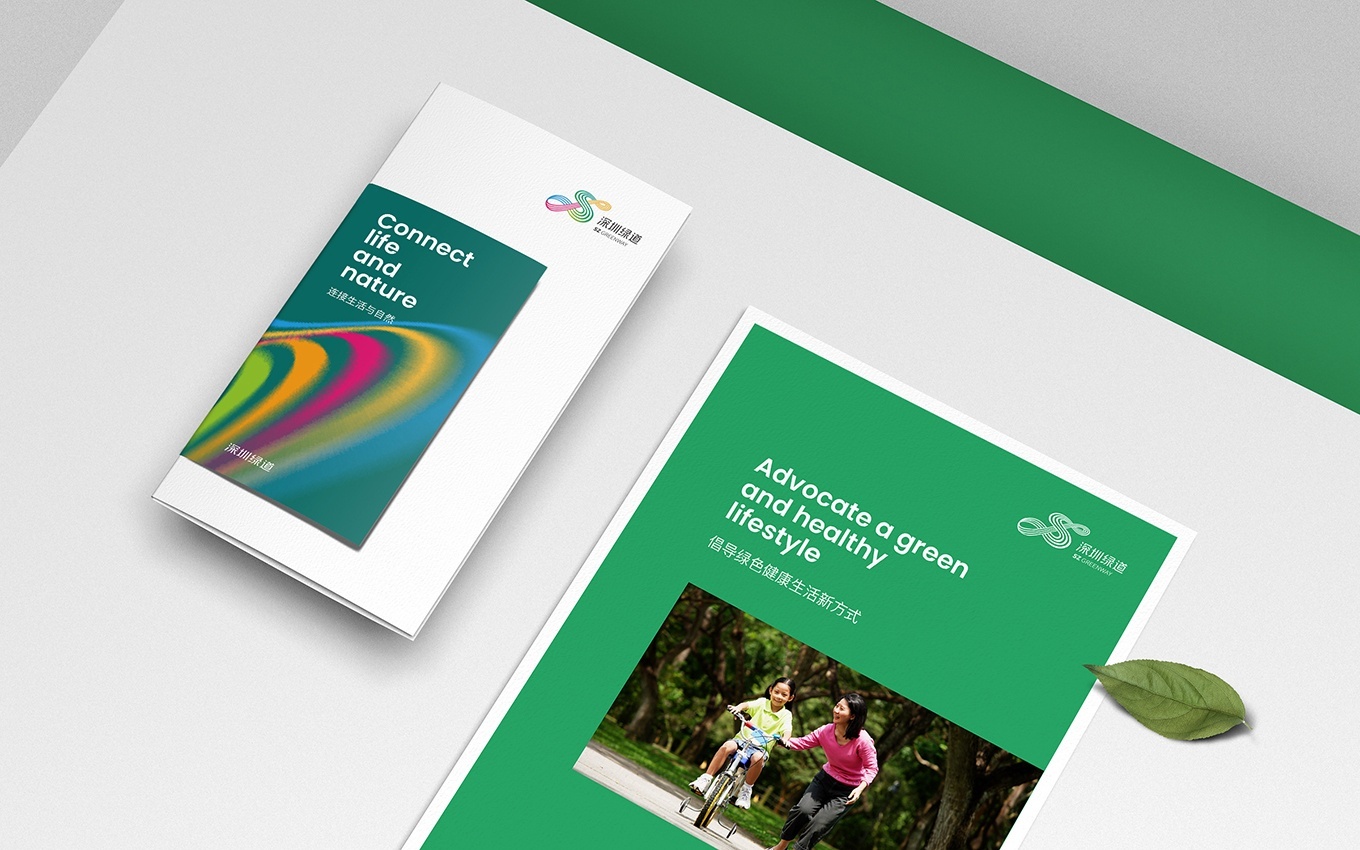
此文是福州vi设计公司关于设计公司如果推广和营销企业的分享,福州vi设计公司旨在想让更多的设计公司提高设计业务能力!
 注:配图为UCI设计公司作品
注:配图为UCI设计公司作品
脸书营销。每个人都说你应该这样做,但是知道你应该在网上营销你的业务和实际有效地做是两回事。
建立一个商业页面,投放广告,整理发布时间表,创造伟大的内容…你从哪里开始呢?
好消息是,在这篇文章中,我们将揭开脸书营销的神秘面纱。脸书营销是一个大话题,所以这不会是一个快速阅读,但我们会涵盖你需要知道的一切,以营销你的脸书业务。没有废话,只是你今天可以使用的实用建议。
准备好了吗?让我们开始吧!
为什么选择脸书营销?
在我们深入研究脸书营销的细节之前,让我们后退一步,看看为什么脸书营销对大多数企业来说是一个好的投资。
答案相当简单:达到。
良好的数字营销可以让你与潜在客户建立联系,否则他们永远不会购买你的产品。多亏了互联网,这些人可以在世界任何地方,如果他们对你卖的东西感兴趣,你可以在网上给他们打广告。
当然,诀窍在于找出如何接触到你的目标受众。这是脸书真正闪光的地方。
截至2017年12月,脸书在全球拥有14亿日活跃用户。是的,那是带" b "的十亿。如果这还不够,这些用户平均每天花50分钟在脸书上。
所以,如果你想面对大量的潜在客户,脸书是很难被打败的。
然而,所有这些都带来了负面影响:大多数用户可能不太关心你卖的是什么。如果你不小心你的脸书营销,你可能会花费大量的时间,金钱和精力向错误的人推销你的业务。
与任何营销渠道一样,脸书营销的诀窍是弄清楚如何在正确的时间将正确的营销内容呈现在正确的人面前……这就是本文接下来的内容。
是什么让脸书营销与众不同
好的营销就是建立关系。是的,你可能会从定价、广告支出回报、参与率或其他宽泛的指标来考虑你的营销,但对你的客户来说,这一切都是关于他们与你的品牌的关系。
我信任你的公司吗?我相信你的观点或信息吗?我觉得你的企业致力于满足我的需求吗?我觉得你的产品或服务值得我花钱吗?
你的潜在客户不断地问自己这类问题。在他们购买之前,他们需要感觉到他们可以信任你的企业、你的品牌和你卖的东西。
换句话说,他们希望与你的企业建立信任关系。
好消息是,脸书是一个致力于人际关系的在线平台。社交媒体就是与他人建立、分享和保持关系。这一点很重要,因为你的脸书营销的成败将取决于你能否利用脸书注重社交和关系的特性与你的潜在客户建立积极的关系。
我现在提出这个想法是因为它将是我们在本文剩余部分讨论的所有内容的基础。为了让你的脸书营销成功,你需要专注于帮助你的目标受众与你的企业建立积极的关系。
就像你的人际关系一样,如果你的业务让人讨厌、垃圾邮件或者要求苛刻,人们不会喜欢你,也不会对你的营销做出好的回应。但是,如果你乐于助人、有趣并提供价值,你将赢得人们的心——以及他们的生意。
设置您的脸书商务页面
不管你想如何使用脸书来营销你的公司,你不能没有脸书网页做脸书营销。这非常简单(6000万个企业已经这样做了,这意味着脸书有很多机会来完善他们的流程),所以让我们快速浏览一下设置过程。
创建您的脸书页面
脸书页面与脸书页面不同。是的,脸书的网页看起来非常像脸书的个人资料,但它提供了各种不同的营销选项,这是普通的个人资料所没有的。
例如,以下是破坏的的脸书页面:
正如你在上面看到的,你"喜欢"一个企业,而不是"加为好友",脸书页面可以有评论,列出地址,包括聊天选项,甚至提供"立即呼叫"或"访问网站"等行动按钮。
如果你想通过脸书的个人资料来推广你的业务,请注意,脸书有删除或屏蔽使用这种方式的账户的倾向。此外,脸书页面让你可以访问营销选项,如脸书广告,这是你无法用个人资料运行的,所以为你的企业创建一个脸书页面是非常值得的。
要创建您的脸书页面,请单击此处。
此时,您可以选择要创建的页面类型:
您选择的页面类型将会改变您在页面上可以访问的字段,因此最好选择一种与您想要在脸书上完成的任务非常接近的页面类型。
例如,如果你是一家当地慈善机构,经常举办社区活动来筹集资金,你可能会更好地选择"事业或社区"而不是"当地企业或地方",即使从技术上讲你跨越了这两个选项。
你必须有一个个人脸书帐户来管理脸书页面,所以你需要在选择你的公司名称后登录到你的个人帐户(小心选择你的名称,因为在你的页面上线后更改它会很麻烦)。
一旦您登录并选择了您的企业名称,点击"开始"创建您的页面!您将被重定向到闪亮的新页面,在您开始使用它之前,您需要对其进行一些定制。
个人资料图片
这是社交媒体,所以你的个人资料照片很重要。无论你是在帖子上发表评论还是出现在搜索结果中,它都将在整个脸书识别你的企业。
如果你是一个有官方标志的大企业,这是一个使用它的好地方。
或者,如果你是一名自由职业者或有一个基于个性的业务(艺术家,乐队,公众人物,MLM等),你可能想为你的个人资料图片使用更个性化的照片。只要确保它至少是180 x 180像素。
封面照片
添加一张封面照片也是一个好主意,因为没有什么比空白的封面照片更能让人觉得"我不知道我在脸书做什么"。你的封面照片是你的脸书页面顶部的大水平图像。
不像你的个人资料照片,你可以在封面照片上表现出一定的灵活性和创造性。例如,在破坏性的,我们在一年的不同时间拍摄了不同的节日主题封面照片。
或者,你也可以用你的封面照片为即将到来的活动或你目前正在进行的特别销售做广告。
官方公布的脸书封面照片是851像素乘315像素,但是(像你的个人资料图片一样)你总是可以选择上传一张不符合这些尺寸的图片,并使用脸书的裁剪功能来适当调整你的图片大小。
描述
脸书页面的另一个重要元素是你的描述。图片很棒,但是有些东西真的最好用文字来表达。
如果你在欢迎菜单中,你所要做的就是点击"添加简短描述"(很方便,是吧?).脸书有155个字符的字符限制,但一个好的描述应该简短而甜蜜,所以你希望不必担心达到限制。
如果您想稍后编辑您的描述,您可以随时点击您的个人资料图片下的菜单中的"关于"。这将为您提供编辑各种业务详细信息的选项:
一般来说,带有些许个性的专业描述效果最好。请记住,你正在努力建立一种关系,所以你想给人留下有趣和难忘的印象。但是,你仍然在经营一家企业,所以你也需要听起来很专业。
创建用户名
最后,在你开始在脸书上推广你的业务之前,你需要创建一个用户名。这是脸书将用于您的自定义脸书网址(又名,虚荣心网址)的唯一标识符。
如前所述,改变你的脸书网址是相当困难的,所以确保你选择一个在可预见的将来你觉得舒服的名字。
不幸的是,脸书上有6000万其他企业,你想用的用户名很可能已经被占用了。在这种情况下,您将有50个字符来找到一种方法,使您的用户名唯一,而不会创建一个很难记住或与您的企业关联的名称。
要考虑的其他脸书页面元素
此时,你的脸书页面在技术上已经完成,你可以开始运行广告或分享你的页面。然而,有几个额外的领域你可能要完成,特别是如果你计划在你的网上营销工作中大量使用你的脸书网页。
添加其他用户
脸书页面相对于脸书页面的优势之一是允许多人帮助管理您的页面。为此,您需要管理您的页面角色。
点击页面右上角的"设置"链接,然后点击左侧栏中的"页面角色"。从那里,您将能够通过姓名或电子邮件地址(使用"分配新的页面角色"搜索栏)找到人,并在您的页面上给他们分配一个角色。
通知
虽然这不会直接影响您在脸书上推广业务的能力,但您可以点击"设置"左侧菜单栏中的"通知"选项,决定您希望脸书通知您页面活动的频率。
行动号召
还记得我们之前谈到的添加行动号召(CTA)的能力是创建脸书页面的额外好处之一吗?要选择您的按钮,请点击封面图片下方的"添加按钮"。
在那里,您将有几个三醋酸纤维素按钮选项可供选择:
使用这些选项,您可以让人们直接联系您,预订服务,访问您的网站,甚至进行购买。对于这些选项中的许多,你需要输入一个网址、电话号码或电子邮件,所以要确保你确切地知道你希望脸书把点击你的按钮的人送到哪里。
脸书市场营销
从历史上看,有两种有效的方法来利用你的脸书页面来营销你的业务:1)通过张贴吸引人的内容来有机地建立追随者,或者2)付费在脸书上投放广告。
然而,由于脸书只有在你投放广告时才能获得报酬,而且大多数商业页面的内容并不那么吸引人,脸书使得在他们的平台上使用有机内容营销你的业务变得越来越困难。
不管你称这一举动是抢钱还是优化他们的用户体验,事实是,这些天来,如果你想在脸书营销,你可能必须付费才能玩。
有机达到:真的死了吗?
在我们开始讨论如何建立和运行有效的脸书广告之前,让我们花点时间来讨论一下脸书有机广告公司发生了什么。毕竟,在过去的十年里,营销人员一直建议每个企业建立一个脸书网页,并试图通过有机内容建立一个追随者。
什么变了?
不幸的是,在过去的几年里,脸书让第一个选择变得越来越难。2014年,脸书宣布,"发布推广创意的页面应该预计它们的有机分布会随着时间的推移而显著下降。"
2016年,脸书在他们的新闻订阅算法中添加了一些元素,以阻止点击诱饵内容显示给用户。然后,上个月,脸书宣布他们将重新配置他们的算法,以优先考虑"来自朋友和家人的帖子,而不是公开内容"。
最终结果?根据脸书的说法:
随着我们进行这些更新,页面可能会看到他们的影响范围,视频观看时间和推荐流量减少。这种影响会因页面而异,受各种因素的影响,包括他们制作的内容类型以及人们如何与之互动。发布人们通常不会回应或评论的帖子的页面可能会出现最大的分发量下降。帖子能促进朋友间对话的页面效果会更差。
所以,如果你碰巧管理着一个像"失败军队"这样广受欢迎的页面,已经引发了很多评论和参与,这个更新可能不会伤害你。
另一方面,如果你像大多数企业一样,要么只有很少的追随者,要么你的帖子没有很多评论,那么是时候表达你最后的敬意了:你的脸书有机食品区已经死了。
你应该继续在脸书上发帖吗?
虽然你可能不会从你的脸书帖子中获得太多的有机联系,但完全放弃你的脸书页面并不是一个好主意。即使在有机发布仍然是在脸书推广你的业务的合法途径的时候,拥有一个脸书页面的最大好处之一就是给潜在客户一个了解你的业务的途径。
还记得关系在脸书营销中有多重要吗?
你的脸书主页是人们与你的企业建立关系的方式。因此,你在脸书页面上发布的内容至关重要——即使只有那些因为想了解你的业务而访问你页面的人才会看到它。
结合这个想法和你在脸书的有机接触可能会相当低的事实,你的脸书帖子应该考虑到潜在的客户。这并不意味着你在脸书的帖子都应该是广告。事实上,你通常应该避免在脸书上发布过度宣传的帖子。
相反,创建帖子来帮助人们了解你公司幕后的人。展示是什么让你的公司变得"真实"和可信(点评是与潜在客户建立信任的另一个好方法)。这样,如果人们查看你的脸书页面,他们会感觉到你、你的产品或服务以及你的公司愿景之间的联系,更有可能购买。
或者,如果你有很好的视频内容,很好地向人们介绍了你的品牌,这可能是另一个很好的方式来充分利用你的页面内容。
例如,在我们自己的页面上有一个视频"颠覆性的运行",已经产生了很多积极的反馈:
最后,因为你的脸书页面现在更像是一个登陆页面,而不是一个推送内容的地方,所以把特别好的内容放在页面顶部可能是个好主意。这样,当人们访问你的页面时,你最好的内容将是他们首先看到的。
要锁定文章,只需点击文章右上角的向下箭头,然后选择"锁定到页面顶部"。在你发布新帖子之前,帖子会一直停留在你页面的顶部。
随着脸书的新闻订阅算法最近的变化,你的有机接触可能不是很好,但这并不意味着你的脸书页面不能成为与潜在客户建立关系的好方法。诀窍在于找出哪种类型的内容最能让人们相信你是一家他们可以信任的公司。
脸书广告公司
好消息是,虽然脸书可能会打击新闻提要中的有机营销内容,但你仍然可以获得脸书营销的力量……如果你愿意付费的话。
显然,付费在脸书上运行赞助内容比简单地在你自己的页面上发布内容要贵得多,但是脸书的广告让你接触到更多的观众。如果你做得好,脸书广告可以为你的生意带来惊人的效果。
在脸书上投放付费广告
脸书有一个有趣的广告模式。在脸书的广告模式下,你定义一个你希望看到你广告的目标受众,然后为你愿意在给定时间段内花多少钱让人们做一些事情(观看你的视频,点击你的广告,成为一个线索,进行购买等)设定一个预算。
付费搜索广告只有在有人点击你的广告时才会付费,与此不同,脸书使用的是一种更接近于按印象付费的模式。脸书的算法尽最大努力让尽可能多的人在你的预算内采取你想要的行动(又名,转化),但如果你的广告没有很好地让人们采取行动,你最终会为每个行动付出更多。
换句话说,脸书会拿走你的钱,把你的广告放在你的目标受众面前,但要靠你来说服他们改变信仰。
考虑到这一点,让我们来谈谈如何利用脸书广告开展营销活动。
建立脸书广告活动
脸书广告使用一个三层系统来组织你的营销工作。您的特定广告包含在广告系列中,而广告系列又包含在活动中。
第一次在脸书广告中创建活动时,您可以选择两个广告管理平台:广告管理器和超级编辑器。总的来说,我建议新手使用广告管理器,但是如果你正在运行几十个或几百个广告,你可能需要超级编辑器的附加工具。
要创建您的第一个活动,请单击脸书右上角的向下箭头,然后单击"创建广告":
您将被带到广告管理器,那里会提示您选择一个活动目标:
选择您的目标,命名您的活动,然后点击"设置广告帐户"(或者如果这不是您第一次在此帐户上创建广告,请点击"继续")。
接下来,您将获得多种目标选项,可用于定义您的目标受众:
位置
如果你的公司是本地的,只向某些地区发货,或者只想在某个地方做广告,这是一个很好的设置。基本上,这个选项允许你使用不同级别的定位(城市,州,邮政编码,国家等)来定位该位置指定半径内的任何人。
例如,如果您想要定位一个购物中心,您可以键入名称或地址,并设置您所在位置的半径。
你也可以瞄准那些只住在那个特定地点的人,如果你是像牙医一样的人,这很好(相对于那些只是去那个特定地点的人)。或者你可以针对"这个地方的每个人",包括居民和路过的人。
人口统计数据
根据您的企业通常服务的对象,这种设置可以很好地确保您的广告只显示给具有正确教育水平、政治派别、关系状态或其他各种类别的人。
人口统计目标的有用性将在很大程度上取决于你对你想要瞄准的受众的人口统计的了解程度。例如,关系状态的改变对于婚礼场地来说是一个很好的目标设定…但是对于餐馆来说就没那么有帮助了。
兴趣
脸书通过查看用户档案中列出的兴趣和他们喜欢的页面来确定一个人的"兴趣"。
这里再一次,usefu
lness of “Interests” will vary depending on what your business is trying to sell. BehaviorsBehaviors allows you to target people based on job role, purchasing behavior or other specific actions that a user takes on Facebook.
As you might imagine, while these targeting options are interesting, certain companies will get a lot more value out of these targeting options than others. Fortunately, though, audience targeting isn’t your only targeting option for Facebook Ads.
In addition to the general targeting options listed above, there are a couple of other ways to target your ads that you should be aware of.
RetargetingAnother effective way to build an audience on Facebook is through retargeting. Facebook retargeting works much the same as every other type of retargeting, with one special advantage: you can use Facebook retargeting to create lookalike audiences.
We won’t get into the specifics of how to set up and use Facebook retargeting in this article, but it’s a great option to be aware of. For more information on how to set up and use Facebook retargeting, read this article.
Lookalike AudiencesHopefully, in the process of marketing your business, you’ve collected a large list of emails. The good news is, you can upload that list of emails to Facebook and Facebook will find any profile associated with an email on that list. All of those profiles will go into a new?custom?audience that you can then target on Facebook.
So, if someone visited your website, filled out a form and then never responded to your outreach attempts, you can use this feature to get back in front of them on Facebook.
However, it doesn’t stop there.
Facebook also has a feature called “lookalike audiences” that identifies Facebook users who are very similar to the users in your email list and creates an audience around those users that you can market to. This algorithm is remarkably effective, which means you can essentially use lookalike audiences to market to thousands or even millions of people who are highly similar to the people who have already expressed an interest in your firm.
As an added bonus, you can use lookalike audiences with your retargeting audiences, too, so you can focus your marketing efforts on the people who are most likely to respond to your ads. To learn more about how to use lookalike audiences, check out this article.
As you adjust your targeting, you’ll notice that the display gauge in the upper right-hand corner of the page updates with estimates of your audience size and estimated daily results.
These numbers take your objective, targeting and budget into account to give you an estimate of what you can expect from your advertising.
As you can probably imagine, what you’re selling and the ads you create can have a huge impact on how effective your ads actually are, but its a good idea to keep an eye on this information to get a feel for whether or not your targeting and budget are reasonable.
Finally, you have the option to define your budget and what metric Facebook will be optimizing your ad placements for. We’ll get into detail about how to pick your budget in a minute, but for now, let’s quickly talk about what your options are in this section.
The biggest decision here is whether you choose to run ads with a lifetime budget or a daily budget. With a daily budget, your ads will run all day, every day, but you can run the campaign for as long as you like and Facebook will turn off your ads when you hit your budget.
With a lifetime budget, your ads will run for a set period and you won’t spend more than your budget. However, Facebook may spend more on certain days and less on others. Also, the lifetime budget option gives you access to dayparting, which allows you to control what days and times your ads are shown.
The rest of these settings are fairly specific to your campaign and business goals, so we won’t worry about them for now. On to ad creation!
Creating an AdAt this point, whether you realized it or not, you’ve created a campaign and an ad set. Now it’s time for the fun part, actually creating your ads! First, you’ll need to pick an ad format:
These ad types are fairly self-explanatory and most people opt for a carousel, single image or single video ad type. For certain businesses, canvas ads can be an interesting option as well (for more on that, click here).
At this point, you’ll need to upload a 1,200 pixel by 628 pixel featured image (or images/video, depending on the format you chose), write your headlines and body copy, pick an appropriate call-to-action and add any links you want people to click on.
In previous years, Facebook would not allow ads with images that were only 20% text. Today, Facebook is more relaxed about this rule, but it still gives priority to images with less text.
Fortunately, Facebook does offer a tool you can use to get a feel for how closely your image follows their guidelines, which you can check out here.
As you can probably imagine, these guidelines put a lot of pressure on you to write compelling ad copy for your Facebook ads. Here are a few things to keep in mind as you put your Facebook ads together.
Stay on TargetWhat’s the first thing you do when you create a Facebook Ad? You choose an objective, which aligns with the goal you want to accomplish. As you create your ads, you should constantly be asking yourself, “How will this help me achieve my goal?”
An ad meant to drive sales will have very different copy and imagery than an ad intended to get users engaging on a mobile app.
This ad uses “Learn More” to win over tentative users, instead of a more immediate “Sign-Up” CTA that might lose them.
With this in mind, you’ll also want to choose your CTA early on, even though it’s one of the last steps in the ad creation process. Knowing whether you want users to “learn more,” “contact us,” or “shop now” can have a big effect on how you design your ad.
Think About Your AudienceUnderstanding your audience is just as important as knowing what you want them to do.?How will they use your product? What pain points do they have that you need to solve? Even within your overall audience, different niches will have different priorities, problems, and objections.
This ad solves the pain point of “healthy eating is hard” – not that it’s “expensive,” which would be the pain point for a different audience.
Picking the right images and ad copy is all about knowing who your audience is and what they want. If you don’t know who you are targeting, you’ll never be able to convince them to convert.
Create a?HookYour hook is the angle that you’re going to use to reel potential customers in. This is what will grab their attention. Emotional hooks are always a good option, but logical and educational hooks also work well.
In many cases, the hook will translate directly into the headline. The hook should tell users “why” they should care, click, watch, or convert.
Sometimes, the “why” comes before the “what,” offering up the pain point or the problem before the actual solution. This is a great way to approach your advertising, because it puts the problem fresh in the customer’s mind, giving you the perfect opportunity to present a solution they’ll be excited to hear.
Anticipate Their ObjectionsWe mentioned objections briefly in the “understand your audience” section, but it’s essential to consider it again when you’re actively writing the ad copy: you must anticipate your audience’s objections so you can fight them.
Objections will be what prevents a user from converting, or even clicking. They assume that your meal delivery service will be too expensive, or that your beach shoes will be cheap material and fall apart the second they hit the hot sand.
Apple’s simple copy reminds users that “All the computer stuff you love” is still available on the iPad Pro. This is offsetting an objection of limited capabilities.
In addition, you should make sure that your ads don’t provoke any objections, and—if possible—puts them to rest. In some cases, even adding just one word to the copy can help prevent objections from ruining your ad’s potential. Saying “affordable meal delivery service” and “durable beach shoes” can offset objections from the get-go.
Keep it Simple, StupidFor many business owners and marketers, our first instinct is to be like the entrepreneurs on Shark Tank who keep saying “oh and one more thing!” even after the Sharks have already made offers or bowed out. We know how amazing our products are, and we want the whole world to know every single reason why.
Realistically, you can only fit one or maybe two feature/benefits into a single Facebook or Instagram Ad. This means that we need to choose the one or two benefits that will speak to a specific audience’s pain points and interests the strongest.
Your sentences should also be short and sweet. Users typically skim through ad copy, so you want your point to get across cleanly and immediately.
One way to trim down your ad copy is to write a sentence and then chop away at least a third of the words. Keep the phrasing as compact and to-the-point as possible and your Facebook Ad copy will be significantly stronger.
While you’re fine-tuning the copy itself (which typically means cutting words), go through and eliminate any corny language that makes you sell like a bad car salesman or like an email containing a computer-crashing virus.
This includes how you choose to punctuate and capitalize the copy—no one wants to see all caps informing you that “ONLY THREE DAYS LEFT ON THE BEST SALE WE’VE EVER HAD DON’T MISS IT YOU’LL REGRET IT.”
There’s no reason for this ad to have the link to the site in the ad itself. It should just be in the CTAit clutters the copy and looks like spam. It also lacks transparency by saying “see how much you can save!” instead of telling users outright.
Some emojis can be okay, but adding lots of arrows pointing to where you want users to click is a no-go. You’ll also want to eliminate phrases like “Stock going fast, you’ll miss out if you don’t order now!” This works fine in an email, but it’s wasting up limited space in an ad, and just comes across like a bad line.
Short and sweet. It’s clearly a promotion, but it doesn’t feel like someone is trying to force you to buy something.
As we discussed earlier, Facebook marketing is all about relationships, so try to sound like a real human person instead of a broken record trying to trick the user into buying something.
Create Specific Landing PagesAs a general rule of thumb, it’s best not to send Facebook Ad traffic to your home page. A good Facebook ad will have a very specific message and that message needs to be closely reflected by the content of the landing page.
Unfortunately, as great as your homepage might be, it has to meet a lot of needs, which makes it hard to focus your business’s home page on delivering one specific message that happens to match the message of your ad.
Instead, it’s best to create a separate landing page for each new campaign. This will make your ads more effective and allow you to make the most out of those Facebook clicks.
As you create your landing pages, it’s a good idea to use what you know about your audience from your Facebook audience targeting. For example, if you’re mostly targeting 60+ year old women,?a picture of a mom with kids may not resonate well with your target audience. On the other hand, a picture of a 60+ client might work a good deal better.
To be honest, if you aren’t willing to go to the trouble of creating specific landing pages for your Facebook ads, running Facebook ads may not be for you. It might get you a lot of traffic, but paying to send a lot of traffic to the wrong page is a great way to waste a lot of money.
The quality of your ads can make or break your Facebook marketing. You can be targeting the right audience at the right times and have all the budget in the world, but if your ads don’t sell, it’s all a waste of money.
How Much Do You Need to Spend?Speaking of wasting money, let’s circle back to your Facebook budget. When you get right down to it, your overall Facebook marketing strategy and your Facebook marketing budget go hand-in-hand.
If you approach it right, you can (and should) plan both at the same time. After all, if you know who you are marketing to and what they are worth, you can use that information to figure out how much you can afford to spend on marketing to bring in a new customer.
There are 4 basic steps to creating an effective Facebook marketing strategy and budget.
1. Define Your GoalsTo figure out what you need to spend on Facebook, you first need to clarify what your goals are for Facebook advertising. These can vary quite a bit depending on whether your ultimate goal is to drive clicks, conversions or leads, sales, revenue or a certain return-on-investment (ROI).
When you get right down to it, the ultimate goal of Facebook marketing?should be ROI. After all, if your Facebook spend isn’t driving profitable revenue for your business, why are you advertising on Facebook?
Clicks and even conversions are great, but your?company doesn’t make money from clicks (in fact, you actually?spend?money on clicks) or conversions. It makes money from sales.
With that in mind, the first thing you need to determine before you decide what your Facebook marketing budget should be is to decide how much revenue you want to drive using Facebook. Once you know that, you can use that information to determine how much ad spend it will take to reach that revenue goal.
2. Create Your Buyer PersonasOnce you know how much money you want to make from Facebook advertising, you need to identify?who you are marketing to.
Now, about?72% of marketers are familiar with buyer personas, but only 30% actually create effective buyer personas?that aid them in their marketing goals.
That’s a problem, because different buyer personas require different advertising.?On Facebook, that means different target audiences, different messaging and different landing pages. Even more importantly, different buyer personas turn into different types of buyers.
So guess what? If you don’t understand your buyer personas, you can’t create?an effective Facebook?budget!
If you’ve got a sales team, talking to sales?can be one of the fastest ways to get a decent buyer persona together. After all, they’re the ones who talk to your customers the most, right?
However, even talking to your sales team and doing a little research isn’t enough to really get at the level of detail you need to put together an effective Facebook budget. To do that, you need to get on the?phone and call?your actual customers.
Ask how they found you, why they converted and what convinced them to pay you. This information will give you a ton of insight into your marketing and sales funnels that you can use to both improve the performance of your paid search advertising and choose your Facebook marketing budget.
3. Figure Out What Your Buyer Personas are WorthTypically, people look at buyer personas as a good way to craft an effective marketing strategy. Buyer personas are great for this, but they are also an important part of putting together an effective Facebook marketing budget.
For example, imagine you are advertising for a SaaS business called SaaS-A-Frass that has the following pricing structure:
In this situation, you’re probably targeting 3 different buyer personas:
Small business “Steve” Mid-market business “Mandy” Enterprise business “Edward”Small business “Steve” has much smaller and simpler business needs than Edward or Mandy, so he’ll probably choose the Starter package. Mandy will probably want the Professional package and Edward will likely need the Enterprise package.
Assuming that Steve, Mandy and Edward stick around for an average of 14 months, 4 years and 9 years, respectively (average lifetimes for a SaaS client) and buy 5, 20 and 100 licenses (again, respectively), here’s the lifetime value for each of these personas ( [licenses/mo] x [# of licenses] x [typical customer lifespan in months] ):
Lifetime Value
Steve:?$1,750 Mandy:?$72,000 Edward:?$1,590,000These numbers look really exciting, but not all of that money is profit.
A normal SaaS company pays about?22% for fulfillment, 9% to sales and has a?40% overhead, leaving them with about 29% of the lifetime value of each client to play around with. That means to simply break even, SaaS-A-Frass has to spend less than the following to acquire a customer from Facebook:
Maximum Acquisition Cost
Steve:?$507.50 Mandy: $20,880 Edward: $461,100If SaaS-A-Frass can keep their acquisition cost below this threshold, they’ll make money. If it costs more than this to acquire each of these customers, they’ll lose money.
See why buyer personas are so important to budgeting?
Of course, it’s unlikely that the market is saturated with Edwards, so SaaS-A-Frass will need a mix of these deals to hit their revenue goals. That mix will dictate their Facebook budget.
So, if SaaS-A-Frass is willing to spend?$0.18 on marketing to produce?$1.00 in lifetime value (for a 11% total profit margin), SaaS-A-Frass’s can afford to pay the following for each buyer persona:
Customer Acquisition Cost
Steve:?$315 Mandy:?$3,750 Edward: $286,200If SaaS-A-Frass can’t produce paying customers from a particular buyer persona at a price point below this threshold, they probably shouldn’t be marketing to that buyer persona.
However, if SaaS-A-Frass’s Facebook ads are currently producing buyers from each persona at these CAC (or even a CAC below these thresholds), SaaS-A-Frass can use that information to then calculate their Facebook marketing budget.
4. Set Your BudgetAt this point, things are pretty simple.?Just take your CAC, average purchase order value and average number of purchase (if you have a subscription model, you can just use the average lifespan of each buyer persona here) and plug them into this calculator!
The default for this calculator shows the monthly budget and ROI for SaaS-A-Frass, assuming that SaaS-A-Frass wants to produce $2,425,500 in new revenue from Facebook advertising each month and they’ve determined that to do that, they need their Facebook marketing to produce 100 sales a month (90 Steves, 9 Mandys and 1 Edward).
Per our example, a?new Steve pays $125/mo for an average of 14 months, a new Mandy pays $1,500/mo for an average of 48 months and a new Edward pays $15,000/mo for 108 months.
Plugging all of that into the?calculator, SaaS-A-Frass will need to budget?$348,300/mo?for Facebook marketing to achieve their new lifetime revenue goals.
See? I told you this part is easy! Play around with the calculator and your different buyer persona numbers and see what sort of Facebook budget makes sense for your business. Or, if you’re dealing with a predetermined budget, use this calculator to look at your different buyer personas and see which target audiences you should be focused on.
Now, as you might imagine, this approach isn’t a perfect estimate of what it will take to hit your revenue goals. This calculator is only as accurate as the information you can give it. But, it’s a lot better than picking your monthly?at random and hoping that your Facebook budget will produce the results you need.
ConclusionAlthough it’s hard to get great organic reach out of Facebook these days, Facebook marketing is still a great way to reach potential customers across the globe. Facebook has an enormous, highly active user base that you can easily market to using Facebook Ads.
In addition, creating a well-designed Facebook Page is a great way to build important trust and relationships with your target audience. The better they get to know you and your business, the more likely they are to respond well to your ads and become paying customers.
By the way, if you would like some help getting into Facebook marketing (or need some help with your current Facebook marketing campaigns), let me know here or in the comments. I’d love to help!
How do you feel about Facebook marketing? What are your thoughts on Facebook’s deprioritizing of organic content from business pages? How do you think that will affect your Facebook marketing? Leave your thoughts in the comments!
Aden AndrusAuthor
Over his career, Aden has developed and marketed millions of dollars of successful products. He lays awake at nights figuring out new marketing tactics and is constantly upping Disruptive's internal marketing game. He loves to write, dance and destroy computer monitors in full medieval armor.
 注:配图为UCI设计公司作品
注:配图为UCI设计公司作品
通过福州vi设计公司的精彩分享,设计师更轻松快捷地掌握福州vi设计公司分享的营销与设计知识,帮助北京vi设计公司更好地服务好客户 。


总监微信咨询 舒先生

业务咨询 舒先生

业务咨询 付小姐